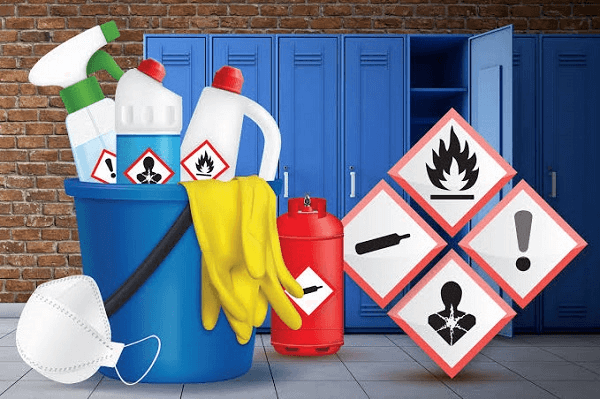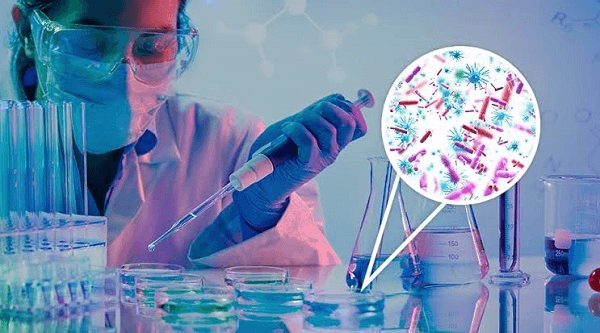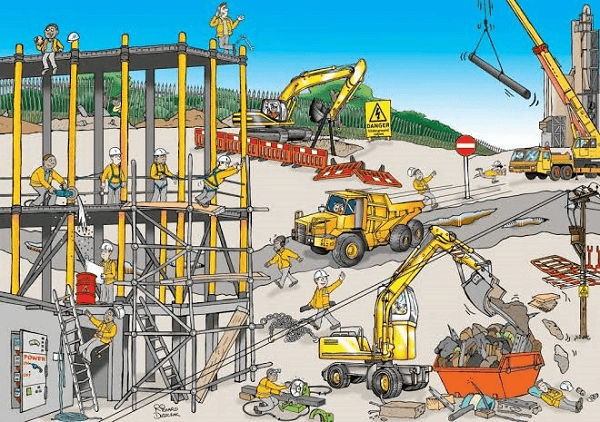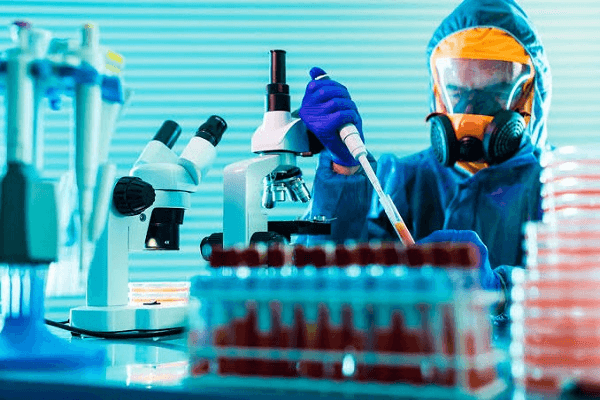Hazard DefinitionIt is a potential source of Harm. Circumstances, events and substances constitute hazards when their nature would allow them, even theoretically, to cause Harm to property, life, health, or any interest of value. 
Hazards can be segregated in many ways. They are segregated into technological, natural and anthropogenic or any blend. For example, wildfires are frequently observed due to human-made climate change or harmful practices in building activities. Stored energy is a common phenomenon observed in all cases; when freed, it causes much damage. The stored energy can take many shapes: thermal, mechanical and chemical hazards and the population may get affected severely. What is the Risk?It is the likelihood that a hazard will cause damage or Harm. It is crucial to note that all hazards may not lead to incidents or accidents. The level of the risk is measured by the intensity of the hazard and chances of getting occur. Differences between Hazard and RiskIt is crucial to understand the difference between risk and hazard. Those substances, events or circumstances can be regarded as a hazard that has the potential to inflict damage or Harm. For example, a fire may cause damage to property and animals. The gravity of damage can be calculated based on the presence of firefighters and fire extinguishers. Hazard Risk AssessmentIt is an assessment of controlling, identifying and assessing hazards. Proactive steps to manage health and safety can be applied to recognize potential hazards before they occur. The first step in undertaking a hazard risk assessment is to recognize the hazards in the workplace. It can be conducted by noticing the work environment and recognizing future natural hazards. Once the hazards have been recognized, it needs to be properly assessed to calculate the risk produced by the individual hazard. Then, the next is to control the risk produced by each hazard. It is done by implementing safety procedures, engineering controls or personal protective equipment. Hazard risk assessment is an important aspect of ensuring safety and health in the workplace. By identifying and assessing the risk it produces, the accident can be prevented from getting occurred. Types of HazardsThere are mainly six types of hazards, and they are: 
1. Physical HazardWhen the substances pose a risk and danger due to their physical properties, it is called a physical hazard. The hazard can be tangible or non-tangible. It can also be human-made or natural. 
Different types of hazards are available in the workplace and include:
2. Chemical Hazard and Prevention MeasuresDifferent forms of chemical hazards are available in the workplace. These hazards are very common to people, and some pose a danger to people and properties. Some of the common health hazards are: 1. Asbestos It is a substance that may trigger cancer and other health issues. It is located in construction substances, for example, insulation, and is released into the air when these materials are touched. Subjection to Asbestos is a severe health hazard, and it is crucial to take steps to ignore the mishap. 2. Lead It is a heavy metal that can harm the nervous system, kidneys and brain. Exposure to lead substances will affect your learning and behaviour problems and can lead to death. Exposure to lead is very common in children due to eating lead-contaminated soil and dust. Adults risk lead exposure due to their work and hobbies that require lead, such as soldering or operating lead-based paint. 3. Acid and Base Acids and Bases are dangerous chemical substances. It can trigger corrosion, burns, and irritation. If an individual gets affected by the acid or base, they would require immediate medical care. The usage of base and acid is commonly seen in manufacturing activities. If an individual works with these substances, he must observe all safety protocols. For example, wear a protective face mask and gloves. 4. Flammable Liquids It is another form of chemical hazard. These liquids can easily catch fire and are very difficult to handle due to their sensitivity. If someone gets affected by the flammable substance, the individual would require immediate medical care. 5. Toxic Gases Toxic gases are extremely harmful and dangerous. It can trigger irritation and respiratory issues and may cause death. It is crucial to know how to handle these gases safely. Toxic gases are kept in a well-ventilated area. It is generally recommended to have these substances in specialized containers. While handling such gases, one should wear eye protection, a mask and gloves. 6. Corrosive Chemicals It causes corrosion, burns and irritations. Corrosive substances are easily available in common household substances such as ovens and drain cleaners. 7. Oxidising Agents Oxidizing agents are reactive. They can trigger explosions or fires. Some can be corrosive and poisonous, eating up skin or tissue. Therefore, it becomes crucial to handle substances with care. 8. Toxic Metals Some toxic metals may enter your body via inhalation and can cause respiratory issues; skin contact may trigger irritation or burns. When ingested, they can create severe gastrointestinal problems. 9. Radioactive Substance Exposure to radioactive materials severely affects health issues, including irritations, minor skin diseases and death. The severity of health issues is largely dependent on two factors: the length of time of exposure and the amount of exposure to radioactive materials. Sometimes short exposure to high levels of radioactive substances can lead to severe health problems. 3. Biological HazardsBiological hazards can cause damage to the environment, people and property due to the subjection of biological agents. Some examples of biological hazards include: 
1. Bacteria When we discuss workplace hazards, Bacteria is the most common hazard. Bacteria are classified as single-celled organisms that can generate diseases. Some bacteria are essential for our health, and others may become us sick. Bacteria can enter the body via open wounds, inhaled through the mouth, nose, and cuts. The body becomes the host for the bacteria, and it multiplies itself and causes serious illness to the body. Bacterial infection symptoms differ on the type of the bacteria, but some common symptoms observed are vomiting, fever, diarrhea, abdominal pain and fever. If the infection is serious, it can also cause death. 2. Fungi It is a form of microorganism that produces infection in the body. Infection can extend from very mild to life-threatening. Fungi can be located in many environments, including plants, soil and water. They can turn healthy people into diseased people. These infections are generally very hard to treat because they can survive in the human body, and antibiotics remain ineffective. Surgeries may be necessitated to flush out the infected tissue. People having weaker immune systems are at the top risk of getting fungal infections. 3. Viruses These very minute particles can generate a replica of themselves in the host (living organism). It can cause several types of disease, including AIDS (Acquired immunodeficiency virus). Generally, viruses are harmless, but some can be proven deadly. No permanent cure is available for viral infections, but treatment has been developed for some viruses, such as Influenza and AIDS. Viruses have been classified into two main groups: RNA and DNA. DNA viruses comprise genetic material composed of deoxyribonucleic acid (DNA), and RNA also contains genetic material composed of ribonucleic acid (RNA). 4. Protozoa It is a severe biological hazard. They are capable of triggering diseases like malaria, giardiasis, and amoebiasis. They can contaminate water supplies and food and cause gastrointestinal illness outbreaks. Protozoa are life-threatening. Protozoa are generally seen in the water, so it becomes crucial to warm or filter before consuming. 5. Parasites Different types of parasites are available in the environment. Parasites can lead to many diseases, some of which can be life-threatening. People assume that parasites attack only animals, but this is not true; parasites are capable of infecting humans, which can be proved to be dangerous. 4. Psychological Hazards
These are those kinds of hazards that are capable of causing damage to people's environment and property as a result of subjection to psychological stressors. Some of the psychological hazards include: 1. Harassment It is one of the most commonly seen in the workplace. Now in the social media age, this harassment is not limited to just work; now, people are, especially women, harassed on the social media platform. In contrast, sexual harassment continues to be the dominant form of harassment in the workplace. There are different forms of harassment, including disability-based harassment, racial harassment and religious harassment. Harassment in the workplace has a damaging effect on people's mental health. It causes post-traumatic stress disorder, anxiety and depression. 2. Stress It is a top psychological hazard in the workplace. It can trigger problems like stroke, sleep disorders, anxiety, headaches, heart disease and gastrointestinal disorders. Several factors contribute to stress, but some common factors include frequent conflict with the co-employee, heavy work pressures, strict deadlines, job insecurity and long hours. Some of the things you can practice to release and manage stress includes:
If your experiencing overwhelming stress, consult a mental health professional. 3. Bullying Bullying in the workplace can cause psychological hazards. Bullying cause stress in the mind of people. Frequent and constant bullying will affect your well-being and mental health. You will be feeling suicidal, depressed or anxious. Bullied people often start taking alcohol or drugs to escape the pain. It also leads to social isolation. When someone is frequently and constantly ridiculed, a feeling of inferiority occurs; an individual begins to withdraw from social interactions. The individual will not speak in public because of fear of being humiliated. It will lead to a sense of loneliness and no one you can share with. 4. Violence It has been defined as an act of aggression and includes both: psychological and physical. The intention of violence could be to cause hurt or kill. Violence can be seen in public places, at home and in the workplace. National Institute for Occupational Safety and Health (NIOSH) states that violence is a driving factor for injury and death in the workplace.
Next TopicHealth Education Definition
|
 For Videos Join Our Youtube Channel: Join Now
For Videos Join Our Youtube Channel: Join Now
Feedback
- Send your Feedback to [email protected]
Help Others, Please Share










